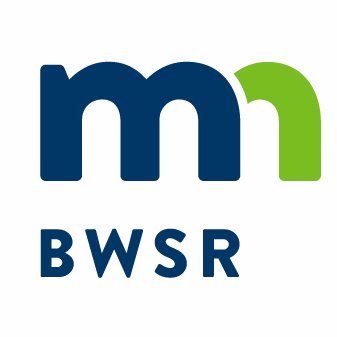Contact: Celi Haga
651-315-5082
Six alternative practices offer flexibility for landowners to meet water quality improvement goals
St. Paul, Minn. — Implementation of Minnesota’s buffer law is underway, and landowners around the state have already made good progress ahead of the first compliance date. The Minnesota Board of Water and Soil Resources (BWSR) released another set of tools today to help soil and water conservation districts (SWCDs) and landowners identify alternative options. The Common Alternative Practices guidance provides water quality solutions for common situations where practices other than buffers may make sense.
Under the law, landowners can use alternative practices with equivalent water quality benefits to buffers. SWCDs have the authority to validate these practices and are working to partner and support landowners to find the best solutions for their land. BWSR’s role is to provide program guidance and support and ensure local governments are consistent and working with landowners.
“Minnesota’s buffer law is designed to be flexible while delivering improved water quality benefits for future generations,” BWSR Executive Director John Jaschke said. “Around the state there are already examples of landowners and SWCDs working together to achieve those results using something other than a buffer. The law’s flexibility enables Minnesota landowners to find a solution that works for them and their land.”
Jim Gebhardt worked with the Mower County SWCD to determine whether the conservation field practices in place for the past three decades on a 150-acre parcel of the Gebhardt family’s farm operations benefit water quality more than what would be provided by a 50-foot buffer required by the new law on public waterways. The district confirmed that the combination of practices meets – and goes beyond – the water quality benefits required to satisfy the buffer law.
“We were losing tons of soil every year on that land before we put in the basins and grass waterways,” Jim Gebhardt said. “It’s great to have those projects recognized for their water-quality benefits but alternative practices to buffers won’t work for everyone. You need to have the right slope of ground to make it work.”
BWSR staff met with more than 15 stakeholder groups around Minnesota to develop these practices, including landowners, SWCDs, environmental, and agricultural groups.
“The large volume of legislative deliberation during the previous two sessions wisely provided for alternatives to a one-size-fits-all buffer,” Freshwater Society Executive Director Steve Woods said. “Landowners who have yet to come into compliance will be able to do so more easily and produce greater water quality benefits when they tailor practices to synch with their current operations.”
The Common Alternative Practices offers six options for landowners and SWCDs, including:
1. Minnesota Agricultural Water Quality Certification Program
2. USDA Practice Standard Filter Strip
3. Grassed Waterway on Public Waters
4. Negative Slope on Public Ditches
5. Negative Slope on Public Waters
6. Buffer plus Conservation Tillage
“Minnesota farmers care about being good stewards of the land,” said Gary Wertish, Minnesota Farmers Union President. “These alternative practices give them the chance to implement options that make sense both for the environment and for their farm.”
Plus, alternative practices are not limited to the six options in the guidance. Other combinations of practices, based in the Natural Resources Conservation Service Field Office Technical Guide, can be developed in partnership with SWCDs. In addition, the BWSR Board will consider additional alternative practices to provide more options for SWCDs and landowners to develop solutions to fit their land and their needs in the coming months.
With seven months to go until the November 1, 2017 deadline, 64 of Minnesota’s 87 counties are 60 – 100 percent in compliance with the buffer law. 200,000 acres have been enrolled in the Minnesota Agricultural Water Quality Certification Program.
Governor Mark Dayton signed bipartisan legislation in 2015 to establish Minnesota’s water quality buffer initiative. The effort is designed to reduce phosphorous, nitrogen, and sediment from entering Minnesota’s lakes and streams to improve water quality statewide. After receiving additional feedback from farmers and landowners across Minnesota, Governor Dayton in 2016 signed another bipartisan bill into law making changes to the program to provide more flexibility and clarity for Minnesotans. With more than 40 percent of the state’s waters polluted or impaired, the need for this initiative is clear. November 1, 2017 is the deadline for public waters to have buffers in place.
For more information
More information on the buffer program, including more detailed information on alternative practices and the variety of technical and financial assistance available to help landowners with implementation, can be found at BWSR’s website: www.bwsr.state.mn.us/buffers.

